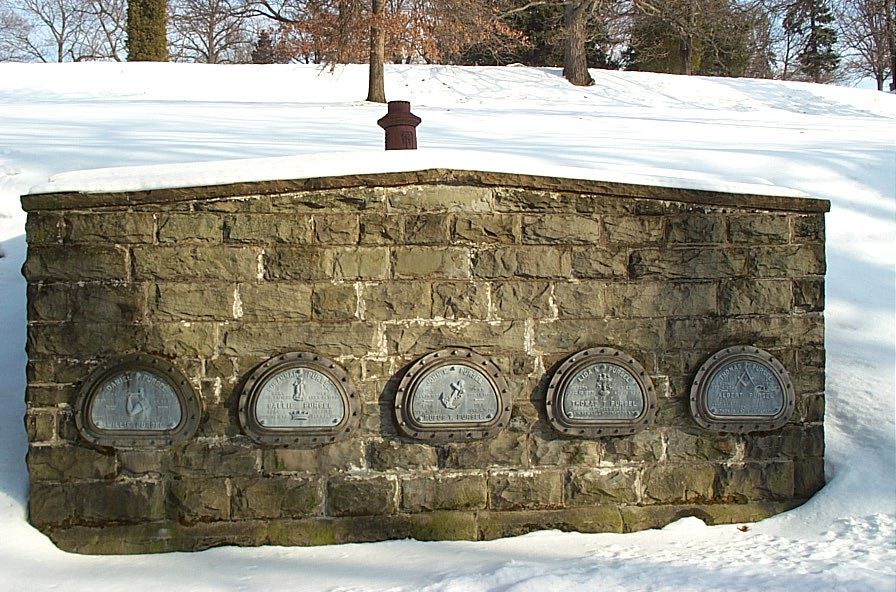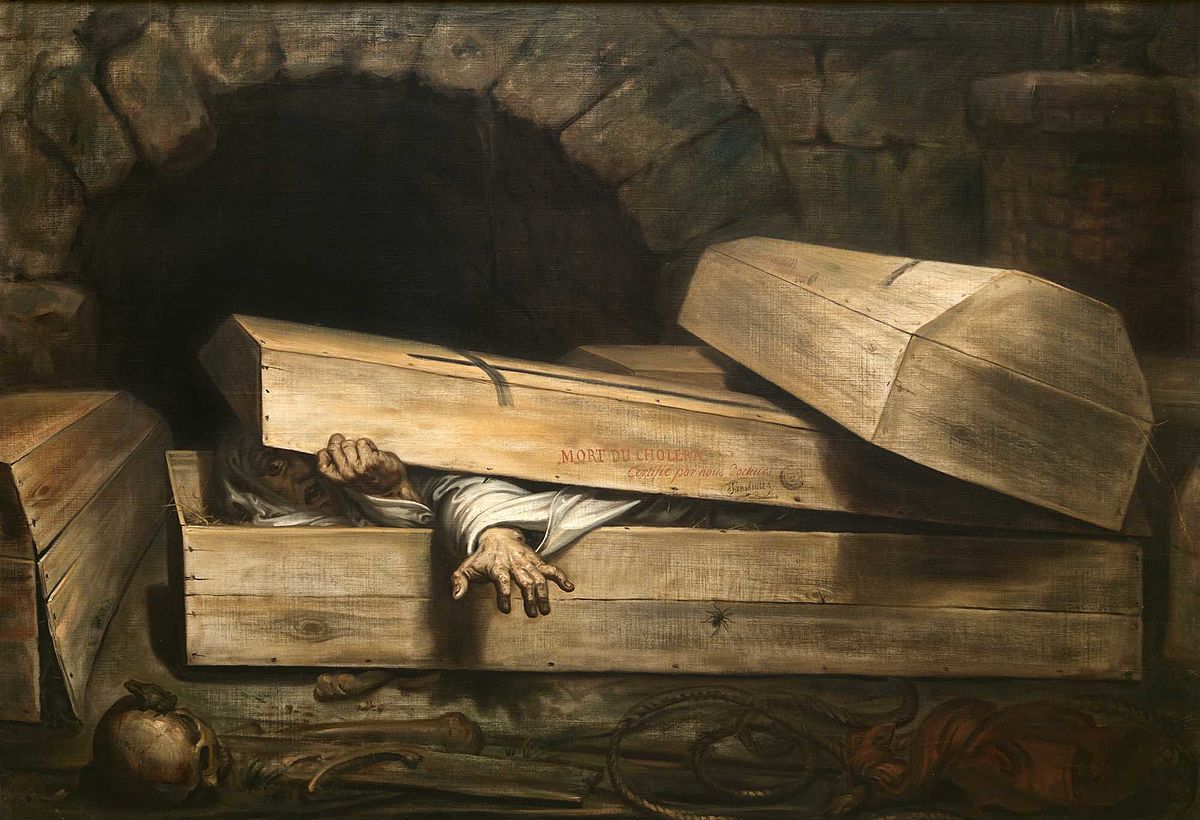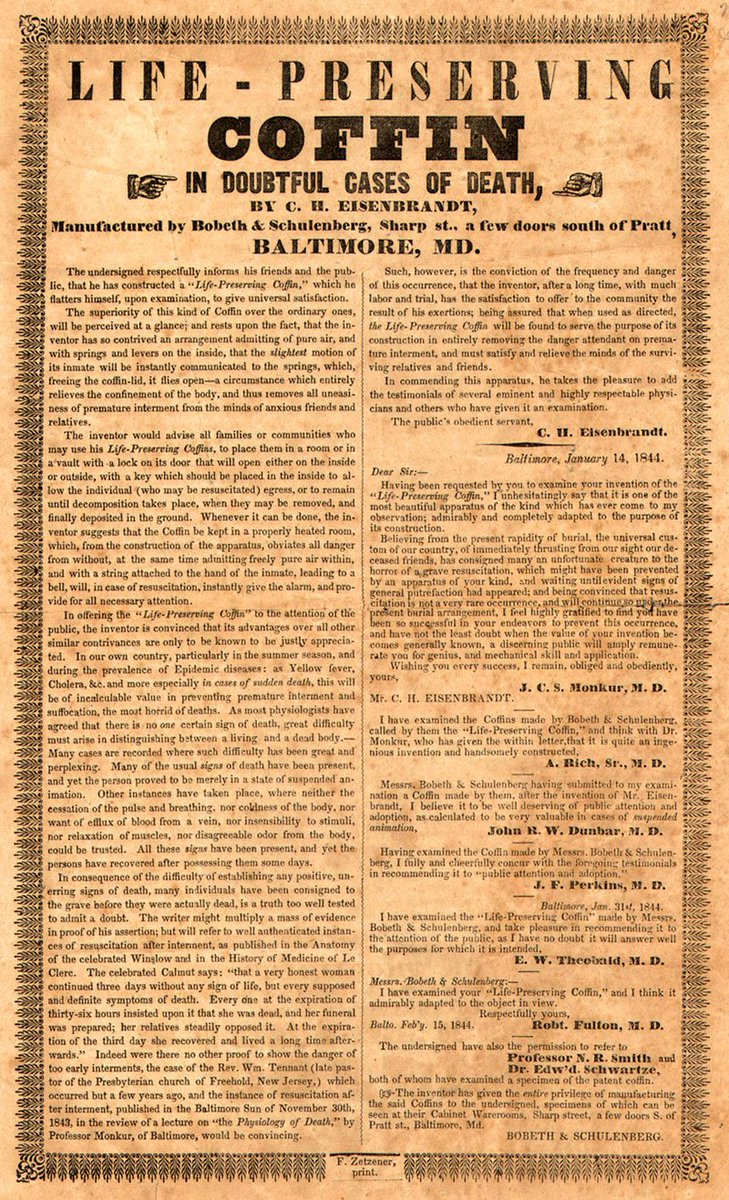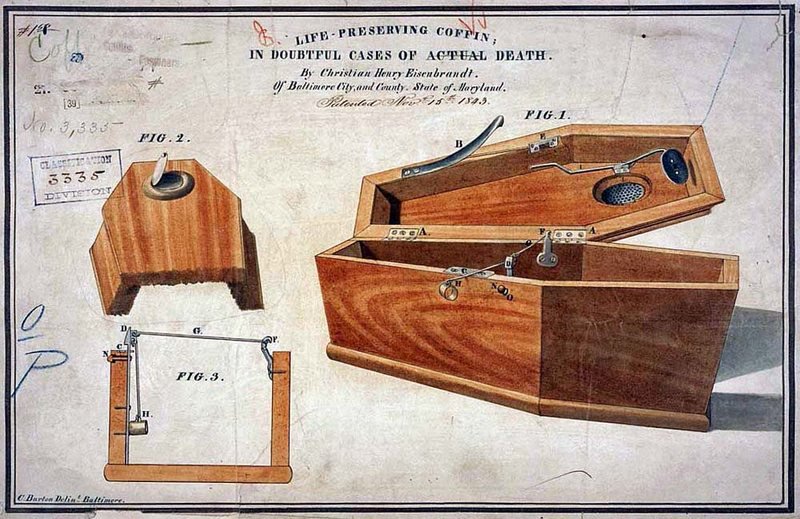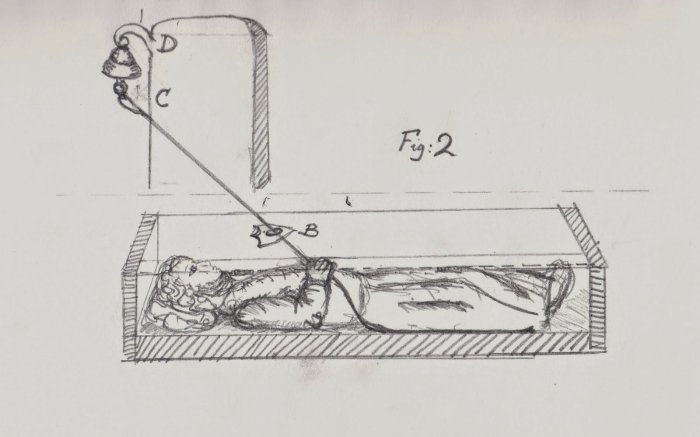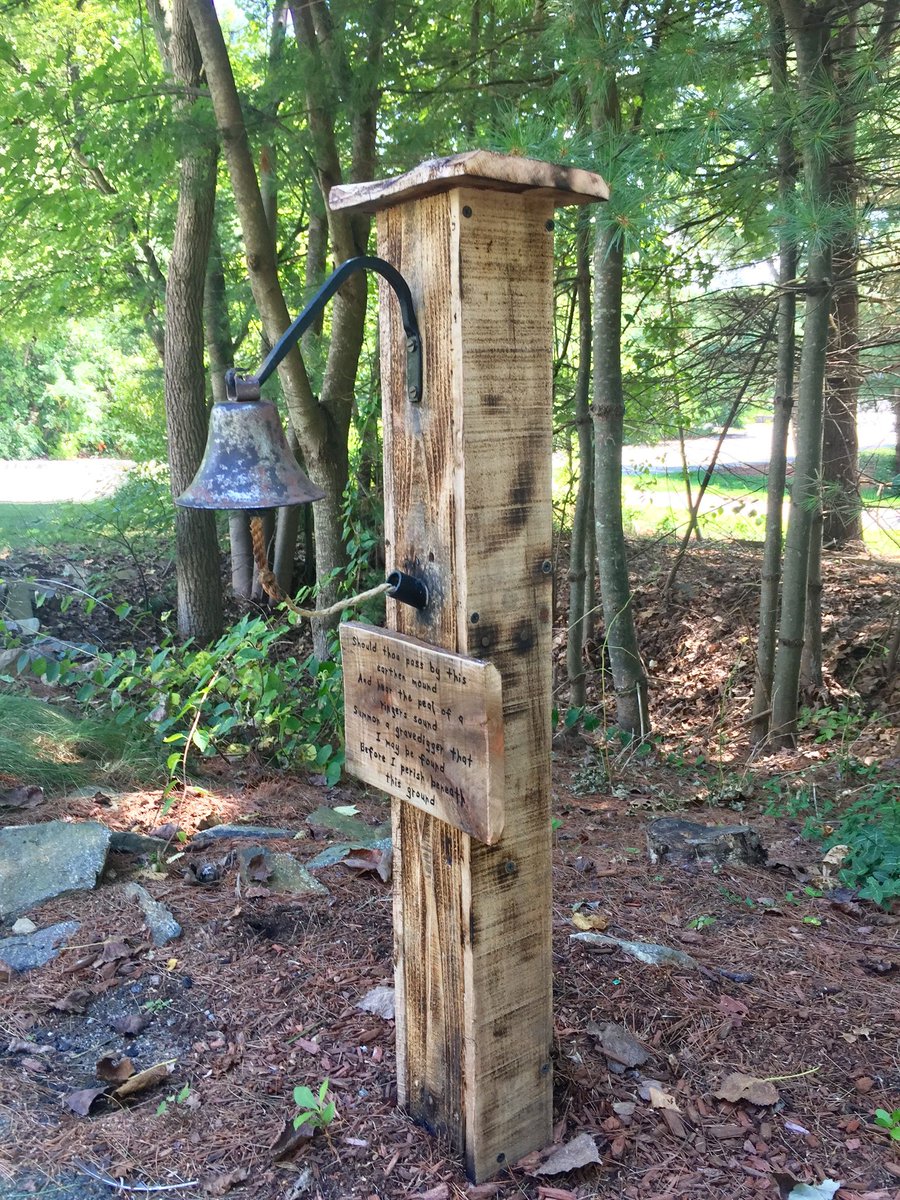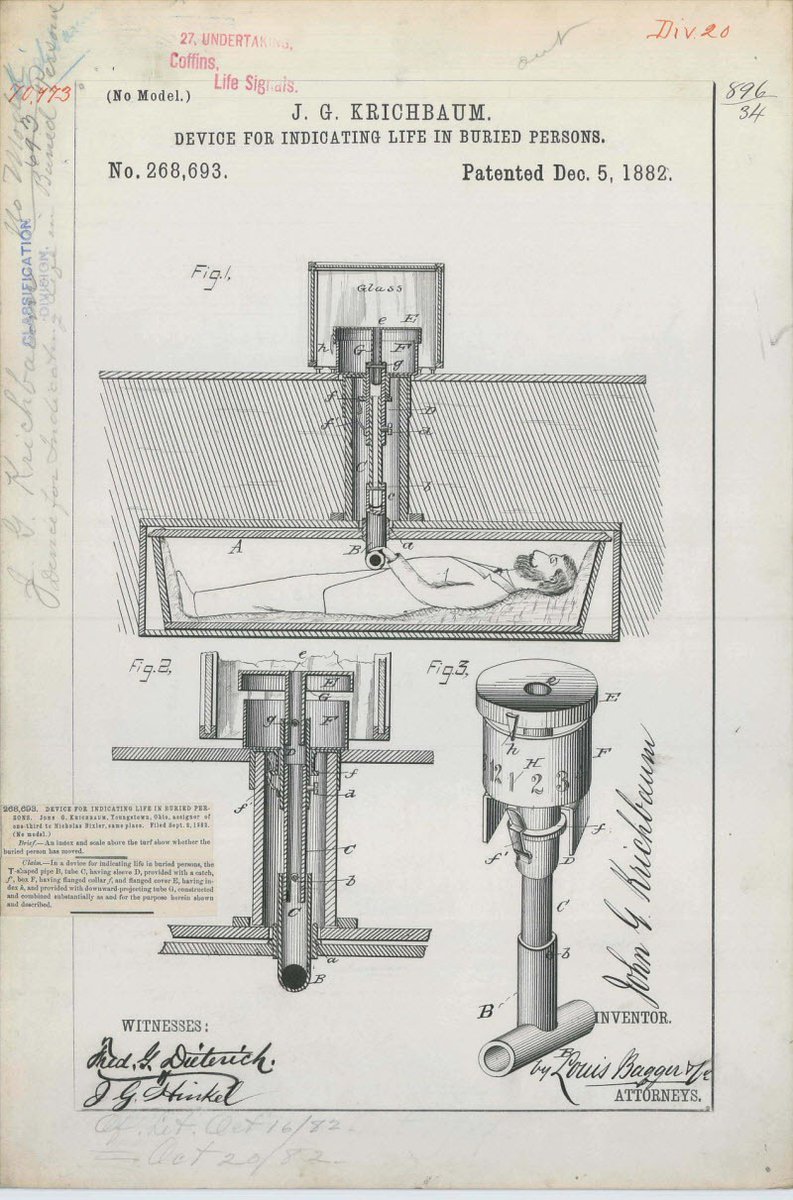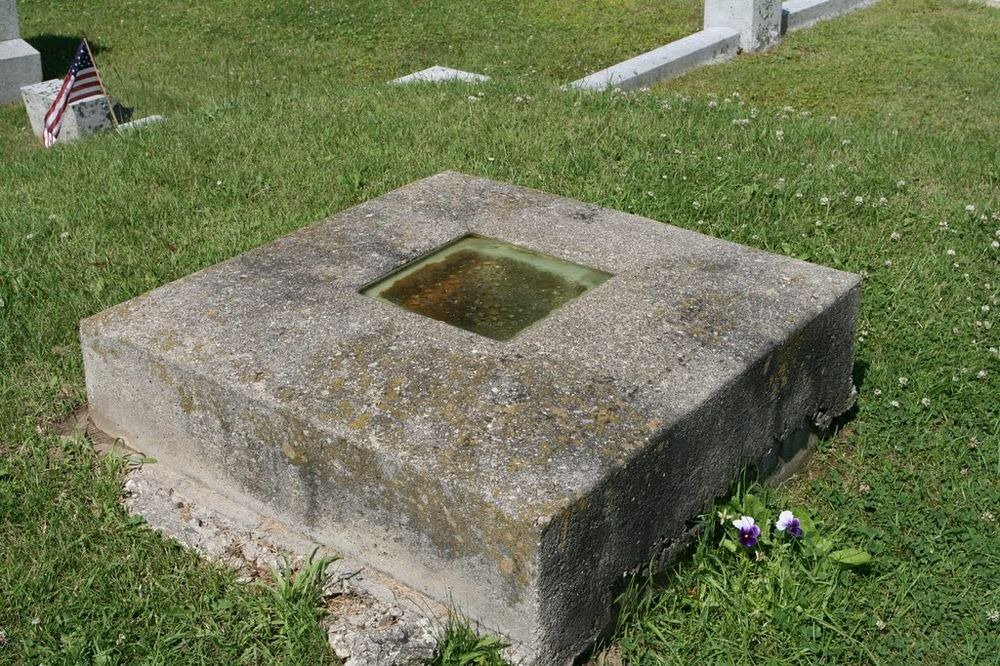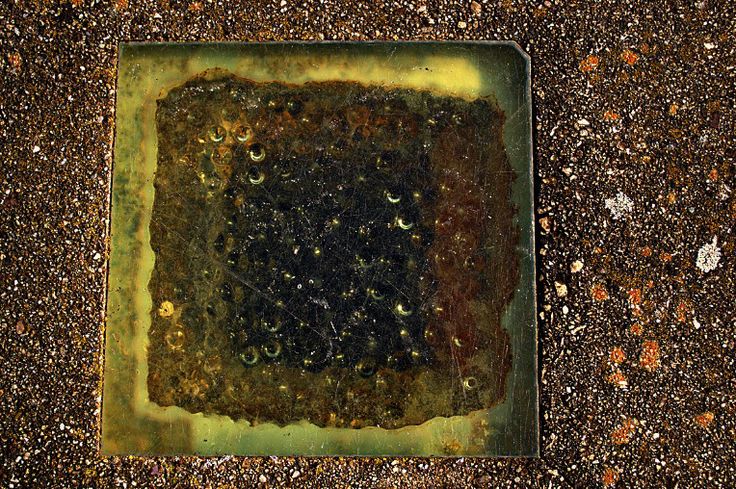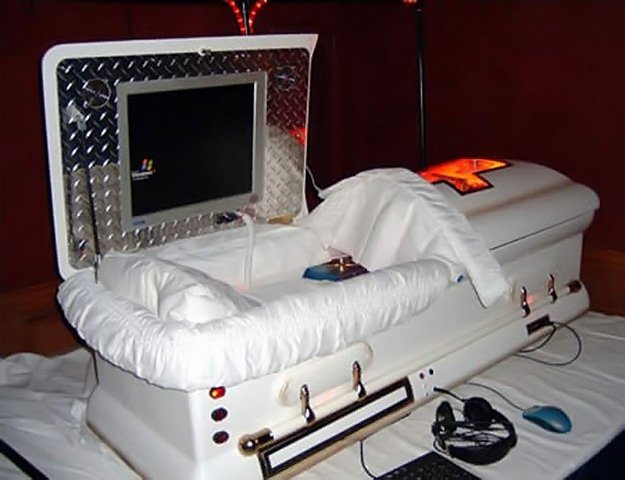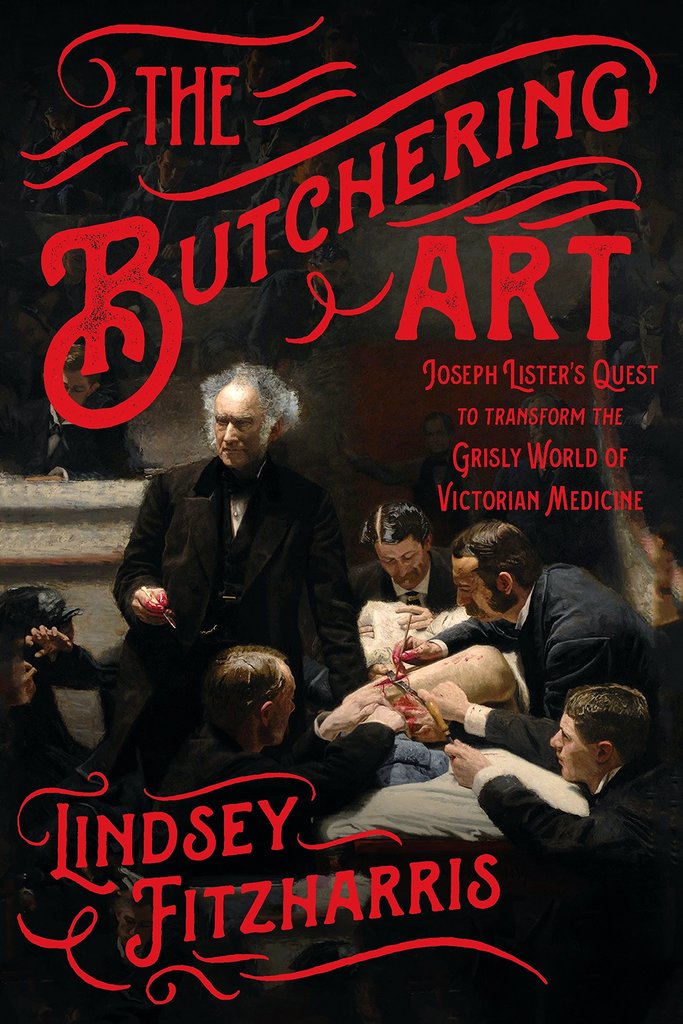(1/11) Thread on PREMATURE BURIAL
This is an "Escapable Burial Chamber" built by Thomas Pursell for himself & his family. The ventilated vault can be opened from the inside by a handwheel attached to the door. Pursell was buried there in 1937, and (so far) has never reemerged.

This is an "Escapable Burial Chamber" built by Thomas Pursell for himself & his family. The ventilated vault can be opened from the inside by a handwheel attached to the door. Pursell was buried there in 1937, and (so far) has never reemerged.
(2/11) Anxiety about premature burial was so widespread during the Victorian period that in 1891, the Italian psychiatrist Enrico Morselli coined the medical term for it: taphephobia (Greek for “grave” + “fear.”).
(3/11) In 1822, Dr Adolf Gutsmuth set out to conquer his taphephobia by consigning himself to a "safety coffin" that he had designed. For hours, he remained underground, during which time he consumed soup, sausages, & beer—delivered through a feeding tube built into the coffin.
(4/11) Gutsmuth wasn’t the first. In 1790, the Duke Ferdinand of Brunswick had a safety coffin built which included a window and a breathing tube. The lid was then locked and two keys sewn into his burial shroud: one for the coffin itself and one for the tomb.
(5/11) The Germans were particularly ingenious, patenting over 30 different designs in the 19th century. The best-known was the brainchild of Dr Johann Gottfried Taberger, which included a system of ropes that attached the corpse’s hands, feet and head to an above-ground bell.
(6/11) Although many subsequent designs tried to incorporate this feature, it was by-and-large a design failure. As the body begins to decompose, it can shift inside the coffin. These tiny movements would have set the bells ringing, and visitors to the cemetery running.
(7/11) The American doctor Timothy Clark Smith created a grave that continues to intrigue (and frighten) visitors of Evergreen Cemetery in New Haven, Vermont.
(8/11) When Smith died (aptly enough on Halloween 1893), his body was interred in an unusual crypt, with his face positioned beneath a cement tube that ended at a piece of plate glass which would allow the unfortunate doctor to gaze upward in the event of his premature burial.
(9/11) Visitors to the cemetery used to report that they could peer down inside the grave and see Dr Smith’s decomposing head. Nowadays, all you can see is darkness and a bit of condensation.
(10/11) If all this seems a bit superstitious, consider the fact that safety coffins are still available for purchase today. In 1995, Fabrizio Caselli invented a model that includes an emergency alarm, two-way intercom, flashlight, oxygen tank, heartbeat sensor & stimulator.
(11/11) I hope you enjoyed this strange, little thread! If you’re interested in my work, help a freelance writer out and check out my book THE BUTCHERING ART - about the grisly world of Victorian surgery: https://www.amazon.com/Butchering-Art-Transform-Victorian-Medicine/dp/0374537968/ref=sr_1_1?dchild=1&keywords=the+butchering+art&qid=1595399699&sr=8-1

 Read on Twitter
Read on Twitter